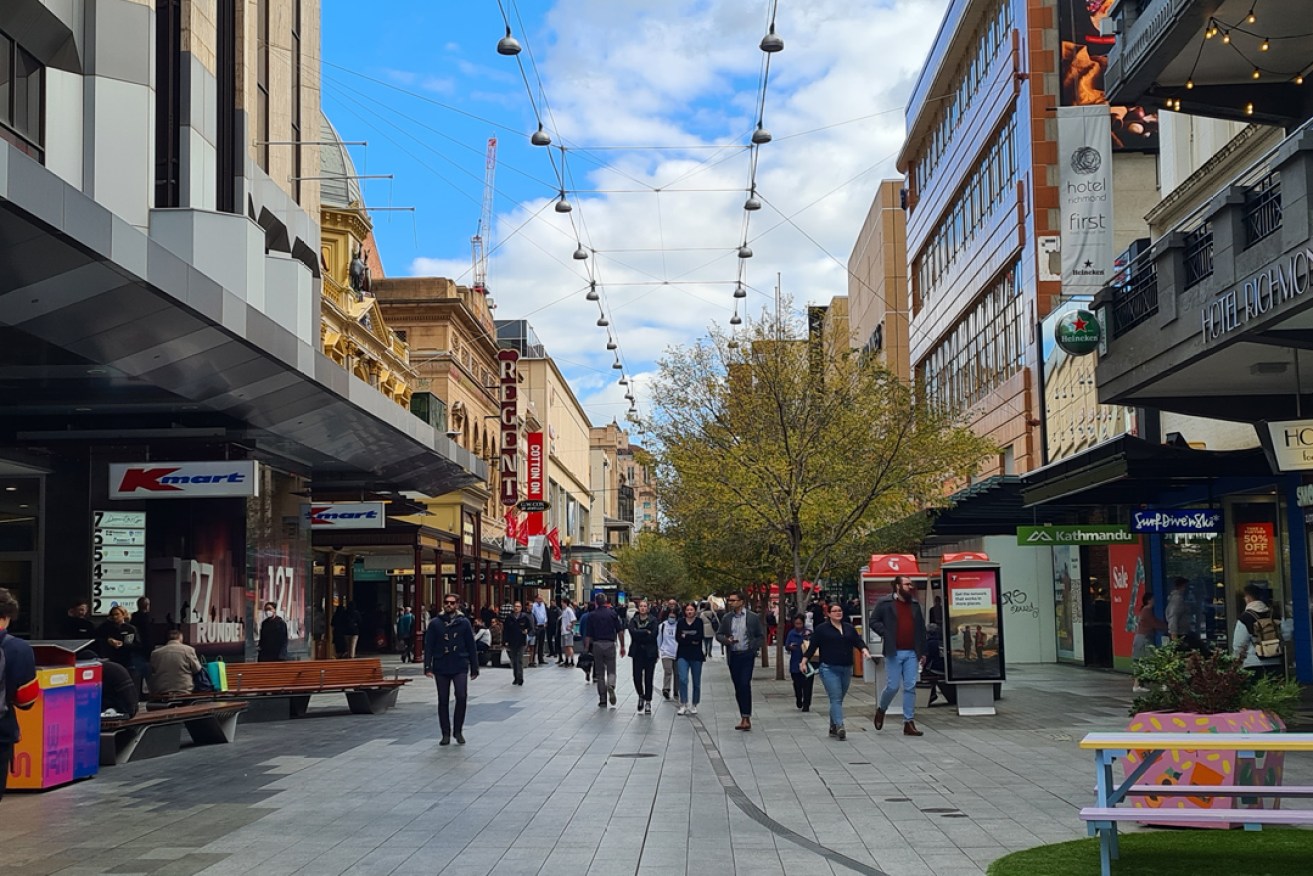Shopping splurge delivers welcome retail therapy
Retail spending in South Australia jumped by 1.9 per cent in May to more than $2.1 billion, the highest percentage rise of any state following the easing of local COVID-19 restrictions.


Shoppers in Rundle Mall this month. Photo: Andrew Spence.
The seasonally adjusted figures released this morning by the Australian Bureau of Statistics show retail spending in SA reached $2,112,600 in May following a 1.4 per cent increase in April and a 0.7 per cent fall in March.
The latest spending increase in the state was the highest in the nation ahead of NSW (1.6 per cent), Victoria (1.3 per cent), Tasmania (1.1 per cent), NT (0.6 per cent) and WA (0.2 per cent).
The only states or territories to record falls were Queensland, down 0.4 per cent, and the Australian Capital Territory, down 0.3 per cent. The fall in Queensland follows increased turnover from the flood recovery in March and a boost from tourism in April.
The South Australian increase follows the easing of close contact and mask-wearing rules in late April.
Nationally, Australian retail turnover rose 0.9 per cent to $35,229,200 in May, reaching another record level.
It was the fifth consecutive monthly rise in retail turnover following increases of 0.9 per cent in April 2022, 1.6 per cent in March 2022, 1.8 per cent in February 2022 and 1.6 per cent in January 2022.
ABS Director of Quarterly Economy Wide Statistics Ben Dorber said resilient spending was reflected across five of the six retail industries in May.
“Higher prices added to the growth in retail turnover in May,” he said.
“This was most evident in cafes, restaurants and takeaway food services and food retailing.”
Spending at department stores was up 5.1 per cent, followed by cafes, restaurants, and takeaway food services (1.8 per cent), other retailing (1.5 per cent), food retailing (0.6 per cent) and household goods retailing (0.4 per cent).
The only industry to record a fall was clothing, footwear, and personal accessory retailing, down 1.4 per cent following three consecutive monthly rises.
Economists had expected a more subdued result given the figures coincided with the Reserve Bank’s first interest rate rise in more than a decade of 25 basis points.
The central bank followed up with a 50-basis point rise in June, the largest increase since February 2000, which triggered a near-eight per cent slump in confidence that has only partially recovered.
Many expect a further 50-point increase at next week’s July board meeting and potentially another one in August if inflation for the June quarter proves strong.
In affirming Australia’s triple-A credit rating on Tuesday, Moody’s Investors Service said it expected a significant increase in interest rates from the RBA, leading to a moderation of inflationary pressures in 2023.
Moody’s expects Australia’s economy will grow at 3.2 per cent in 2022, reflecting solid consumer demand growth as households draw down their pandemic savings, and a positive employment outlook.
“In 2023, GDP growth will moderate to 2.6 per cent as tighter monetary policy leads to a modest slowing of consumer demand,” the global rating agency said.
– with AAP




